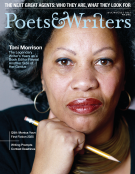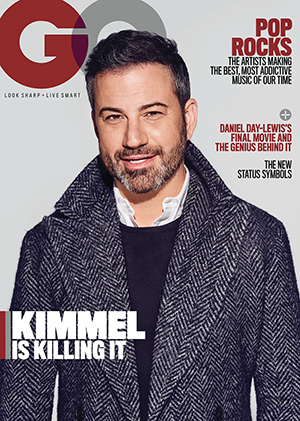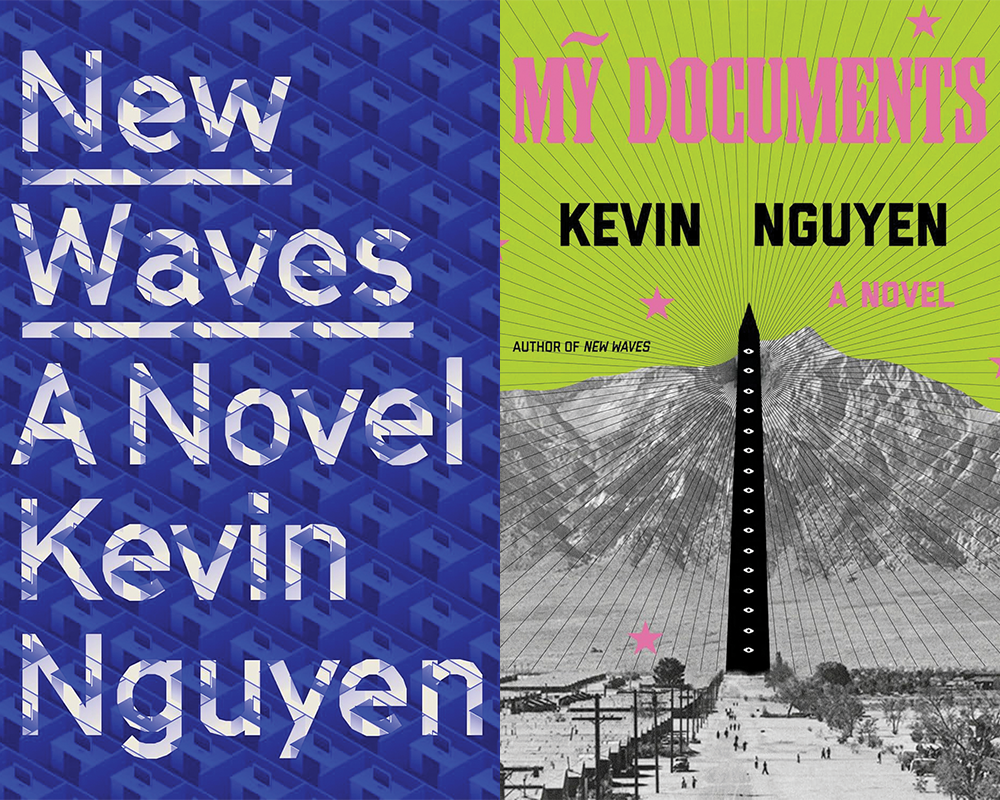I started my first novel because my day job was boring. It was the 2010s, the waning years of the Silicon Valley boom, and I was in a low-level position at a gigantic tech company where I was mostly tasked with regurgitating PowerPoints. When I wasn’t losing at ping-pong in the dedicated ping-pong room, I usually squirreled away in nap pods trying to write. Despite the free time that the campus atmosphere afforded, I barely got anything on the page; instead I gained ten pounds in a month gorging myself at the free pasta bar during lunch every day.
Eventually the tedium got to be too much, and I made the leap to journalism. The industry was precarious, but no one would ever accuse it of being boring. I started in 2016 as an editor at GQ, a men’s fashion magazine, though I mostly worked on reported features. Being there activated something in my fiction: how I approached it and how I got it done.
There were the obvious things. Now I was in an environment surrounded by writers and editors rather than engineers and product managers (though the dynamics are surprisingly similar, with temperamental writers reluctantly taking directives from their editors rather than engineers bowing to product managers). But it was the act of magazine-making—the sprawling ideas meetings, the oddly specific office politics, the late-night pressure of an issue-close deadline—that rewired my brain. Printing out the entire issue and taping it to the wall and later poring over those proofs with a pen, fidgeting with margins in awful Adobe software, cultivating the desire to produce great writing when everyone had a different idea of how to achieve such a thing—all of it altered my perspective.
There were some guiding principles. My old boss, GQ editor in chief Jim Nelson, told me every great magazine is a mixture of constancy and surprise—the kind of contradiction that starts to make sense only once you’ve done the work for a while. A magazine needs to deliver what readers expect each month while shaking things up enough to avoid boring them; that balance needs to be reflected in everything, from an issue’s service journalism to its feature well. These discussions were sometimes heated, other times even existential—what stories need to be told? How do we at once satisfy and subvert the assumptions of our readers? It was funny when I took a step back and realized we were arguing over things like whether Bruno Mars was cool enough to put on the cover. (At the time, he wasn’t, though apparently Jimmy Kimmel was.)
The job was far more complicated and difficult than anything I’d encountered in tech. When I came up with ideas that Jim didn’t like, he’d say they were too predictable or too left field. How could story selection reflect constancy and surprise? And how did you achieve that down to the line level?
Those questions haunted me at the office and then followed me home, as I worked secretly on the manuscript that would eventually become my first book, New Waves (One World, 2020). At the time I was unagented. I hadn’t gotten an MFA; I didn’t have a writing group. Without a feedback mechanism for any of my work, I just let Jim’s mantra about constancy and surprise guide my revisions. Eventually I understood how to translate that into the more mechanical efforts of the book: Each scene should start in a place that grounded the reader and end somewhere totally new to propel the narrative forward; every character needed to act consistently if I wanted them to do something volatile—and surprising—later. More than anything, working at a magazine made me deeply consider the reader’s expectations and how to play with them.
Anyone who has worked on a manuscript while also holding down a full-time job knows how exhausting it can be. The writing happens in the mornings or evenings, bookending an already long day, requiring you to summon some deposit of extra energy to get a few more words on the page. But at least at a magazine I was motivated by the tricky conundrums of another kind of writing: journalism. No story was the same, and even if the job was demanding, it was never tedious.
Well, never too tedious. This work did involve very long days looking at walls of text. As we neared the close of an issue, we’d hang proofs to determine the flow of its contents. Again, there were more guiding contradictions. Pieces had to stand on their own while also speaking to one another; the issue had to feel structured but not too structured. (You can easily see how this would apply to novel plotting.) We debated endlessly about headlines. (Those writers struggling with poem or story titles can relate.) Often they should be funny, without being a joke. If a headline dissatisfied Jim, we’d shout out new ideas in real time. Usually whatever got a laugh in the room won out.
No one knew I was writing fiction—not even my closest friends. I wasn’t embarrassed by being a wannabe novelist; I just didn’t want to be one of those people in Brooklyn who talks about being a novelist. But I began giving readings around the city, trying out certain sections of my manuscript at loud bars and on small stages. I never gave context for the excerpt I read, preferring instead to see if the writing would stand on its own, even to a stranger. If the reaction was laughter, I took it as a sign that something was working.
If I had an image about the luxury of working at a men’s fashion magazine, that was quickly deflated by the many sudden rounds of layoffs. One particularly brutal sweep had created huge gaps in our staff, and I was suddenly made the culture editor—a promotion that came with no pay increase. Now I was responsible for editing a lot of celebrity profiles, which also meant dropping by photo shoots to shake people’s hands. (John Cena’s hands were, memorably, very large; his handshake surprisingly gentle.)
I preferred narrative features, but the profile was its own specific genre, complete with rules and constraints. You always had to hit certain notes: Breezily explain why the subject matters, give the reader a sense of their personality, and hopefully reveal something unexpected about them. Also, and perhaps the most vital part of editing a profile, is knowing when to quote someone and when to paraphrase. When someone talks, how much of it do you have to hear? This economy of characterization was immensely helpful to my fiction. In my manuscript I realized that I’d spent far too many words describing a character’s appearance. How they acted or moved suggested more to the reader than the details of their outfit.
The magazine advertising business wasn’t the only thing losing influence during this time. Actors, musicians, and athletes were beginning to understand that their own Instagram accounts had as much clout as a spread in a glossy magazine—and, of course, they could avoid the tough questions or scrutiny of a journalist. With that leverage celebrities negotiated down their commitments. I watched as the rule for a cover story—two two-hour sessions, at a minimum—dissolved into less and less interview time. Zayn, a mediocre pop star, ghosted his second session entirely.
Writers would sometimes return with less and less material to turn into feature-length stories. But as an editing challenge I found it thrilling to try to make the most of these limited interactions. How do you build scenery and characters from nothing? In this way my nascent fiction writing primed me to do exactly that: imagine something from nothing.
Over time I discovered that Jim’s advice about constancy and surprise was also a bit of an escape hatch. If people didn’t like something, either it wasn’t consistent enough, or perhaps it was too predictable. One particularly frustrating example was when I wanted to do stories about policing. A more senior editor told me that was too predictable (in that it will come as no surprise the police are extraordinarily prejudiced against Black men).
Often an editor would ask if this was something “the GQ man would be interested in.” This was a ridiculous question. (Add to the fact that all the survey data showed that most readers were women, though we had to keep this fact secret from advertisers.) Defining the platonic “GQ subscriber” was a silly exercise because each editor had a different idea, and usually they were just imagining the ideal reader as themselves. This, I thought, led to the least productive conversations at the magazine. Besides, in the end we were satisfying Jim’s desires. And though I trusted his taste and judgment—the two things a great editor in chief possesses—understanding what a mercurial boss wants is part of any job, no matter where you work.
Eventually Jim moved on from GQ, and so did I, to a publication where I could edit investigative features. But the new place was a website, and I had to give up the print process. I don’t miss having to make copy fit into layout, twiddling with paragraph breaks and changing the size of text boxes, hoping the designers didn’t notice. But I do miss the rigidity and stubbornness of print.
A magazine is the result of many decisions, made by a lot of people. It’s always amazing to me that an issue ever closes on time. (Although we often missed the first deadline and would incur massive late fees with the printer.) But the act of writing a novel is a mostly solitary act. Even with the intervention of a strong agent or editor, nearly all the decision-making is on the author. But as I revised New Waves—which, by this point, had been sold by an agent—I found it endlessly helpful to imagine two audiences: the reader, who I didn’t want to bore, and an imaginary editor in chief, who I desperately wanted to impress.
The rhythms of the book publishing process are many times slower than those of a magazine close, but a lot of the careful decision-making is the same. An entire production line of smart, sometimes earnest, and often underpaid workers turn the written word into a physical reality—feats of labor that are rendered nearly invisible by the time it reaches a reader’s hands. The goals and audience might be different between books and magazines, but the collective work of publishing good writing remains dutiful and inspiring.
Writing my second novel, Mỹ Documents, published by One World in April, was an entirely different challenge. It is more directly about the relationship between reporters and their sources and the ever-shifting dynamics of the media business—drawing closely to my experience in journalism. But still, what informed the book most was imagining Jim in my ear, talking about constancy and surprise. He might’ve been talking about magazine-making, but he was evoking what I love most about novels, an art form that aspires to express brilliant contradictions.
Kevin Nguyen is the author of the novels Mỹ Documents (One World, 2025) and New Waves (One World, 2020). He is the features editor at the Verge, where he publishes award-winning stories about labor, business, and policing, and was previously a senior editor at GQ. He lives in Brooklyn, New York.
Thumbnail credit: Robyn Kanner









